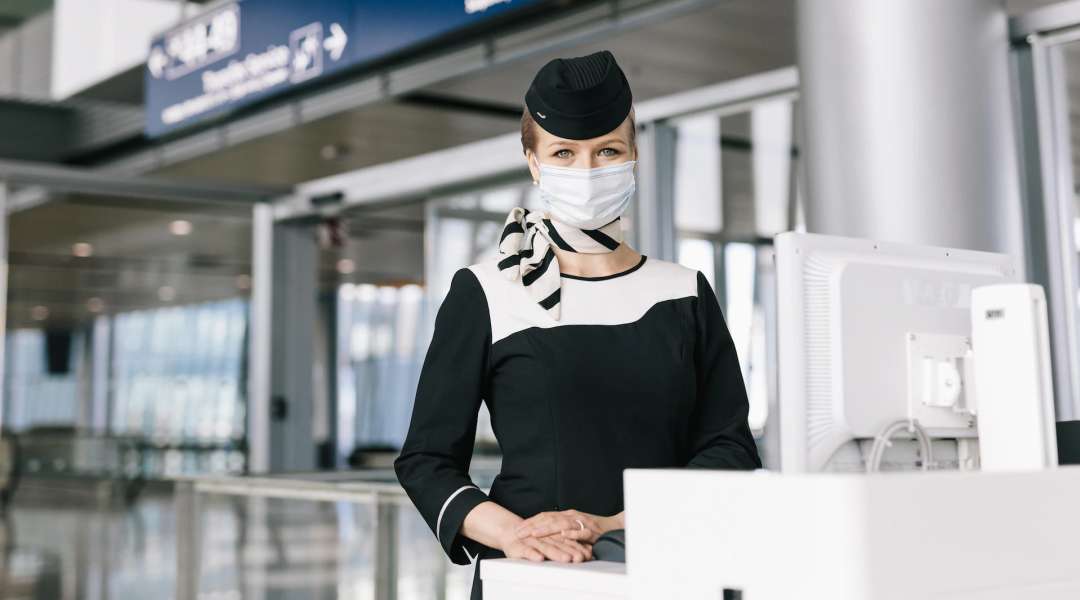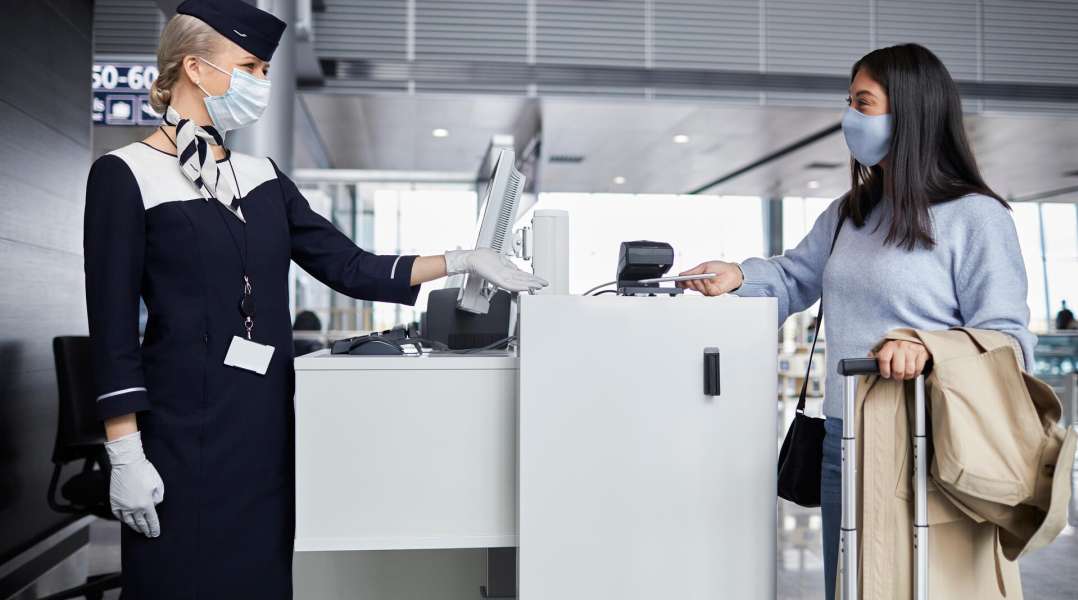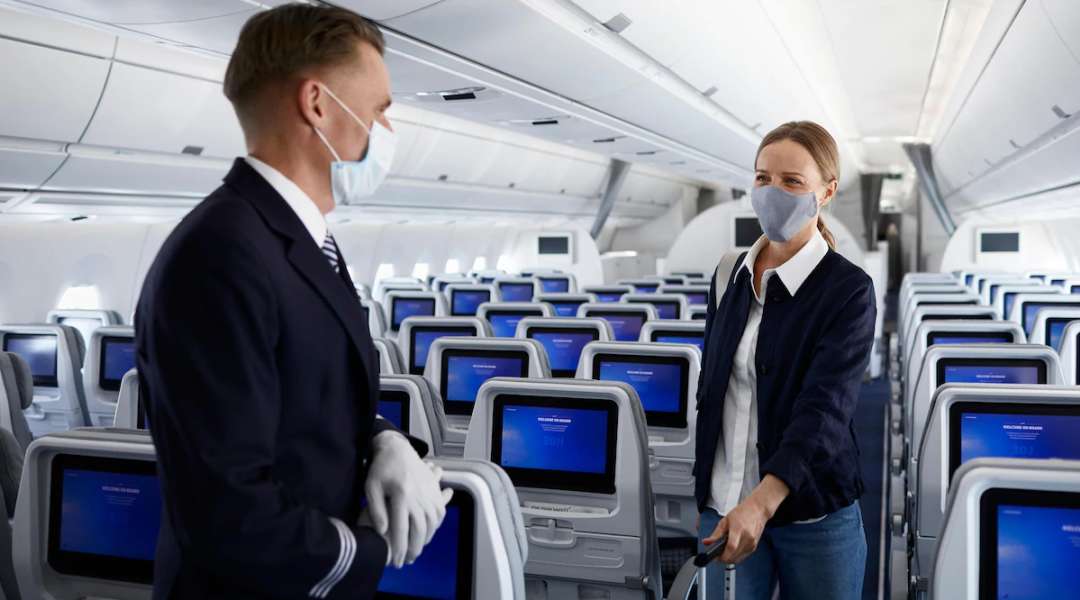
With travel to Japan from the UK currently being limited to very exceptional cases only, we are living through what we at Visit Japan UK like to think of as one long planning phase; getting inspired, tweaking the wish list and thinking about itineraries.
Although travel currently prohibits mostly all international travel from the UK to Japan, that doesn’t mean that the airlines haven’t been busy preparing. In fact, many new guidelines are now in place in order to keep essential travellers, mostly from Japan entering 14-day quarantine in the UK, as safe as possible while they’re in transit.
We checked in with Japan Airlines, Finnair, British Airways (currently not operating their Japan routes) and All Nippon Airways to find out some of the things that they’re doing for those exceptional cases and some of the practical things that we might still be encouraged to do, in order to keep any future travel as safe and feasible as possible for everyone.
Before you leave the house
The journey has to start somewhere, so why not at home. When you’ve exhausted all the ways of experiencing Japan at home, and the time comes that we can travel again, here are some things prospective passengers might be able to do, based on current guidelines:
- Check in online before arriving at the airport, downloading their boarding pass to an app or printing it at home, and keeping their customer details as up to date as possible. This should help reduce time spent interacting with others, or in queues at the airport.
- Wear a mask (or a mouth covering that falls within government guidelines) while on their way to the airport and once they’ve arrived.
- Check the official government advice regarding infection prevention for where they’re travelling to and make sure they pack any relevant essentials. The JNTO Safe Travel account will be kept up to date with all of this information.
- Consider their arrival time, and balance time spent in the airport against arriving on time for their flight. British Airways recommend arriving 3 hours prior to departure for long haul flights.
- Remember that cash will temporarily not be exchanged or accepted as payment at airports, and consider sourcing their currency safely in advance, or loading their holiday money onto a contactless card. Providers such as Monzo offer debit cards attached to easy-to-use apps that do not charge currency exchange fees for use abroad.
- Prepare for the fact that all non-essential movement within the cabin will be limited so, for long haul flights, they may be advised to come prepared accordingly (DVT socks to prevent the risk of Deep Vein Thrombosis, for example).
- Pack as light as possible to avoid having to handle bulky luggage at the airport, and try and put whatever they can into hold luggage to prevent it being mishandled by other passengers. If they really do need cabin luggage, they’re encouraged to keep this to one small item only.
Once you’re at the airport

Maybe you love them, maybe you hate them! Either way, here are some current initiatives we can look to while planning for our next Japan trip, once travel is back up and running:
- Staff are wearing masks and, in some cases, gloves and goggles.
- Clear partitions and vinyl curtains are being introduced at service desks on the UK side and Japan side, as well as Helsinki airport for those transferring with Finnair, Japan Airlines or British Airways.
- Hand sanitizing stations are being introduced throughout airports for customer use, with a reminder to pay attention to high-touch areas like self check-in kiosks for those who have not already checked in online.
- Temperature screening thermal cameras are being placed at security.
- Regular disinfection of other high touch areas (such as tables, chairs and kiosks) throughout airports and lounges is now in place.
- Advice is to limit the number of surfaces you are in contact with by self scanning a boarding pass, and avoiding approaching staff positioned at gates.
- Floor stickers at airports help direct flow of movement for customers and maintain social distancing between passengers moving through the airport.
Onboard the aircraft

What kind of improved safety precautions are being brought in at this stage?
- Customers are expected to wear face masks or coverings while on board and may be turned away if they have none. British Airways add that as a general guideline, one mask is thought to be effective for roughly 4 hours, so passengers should bring replacements and spares according to how long they’re travelling.
- Onboard staff are similarly wearing masks at all times, as well as gloves and goggles in some cases, depending on the airline.
- Boarding is being conducted differently and in a socially distanced manner, with small groups at a time. ANA All Nippon Airways, for example, are filling the plane from front to back in order of window seat, middle seat and then aisle seat. Finnair crew are reviewing seating at the time of boarding to ensure people not within the same safety bubble are as distanced as possible. Japan Airlines have similarly reduced their total number of available seats on board, at least until the 30th June 2020.
- If a passenger has to bring hand luggage, they are advised to reduce it to one item and store that item under the seat in front of them, as opposed to in the overhead lockers, where possible.
- Passengers are being asked to focus on stowing their own luggage only and to allow staff to help anyone struggling with theirs. Equally, passengers are encouraged to keep conversation to a minimum in order to reduce the amount of saliva particles in the air.
- Passengers are being issued with disinfecting materials, with hand sanitizer available on the aircraft. British Airways are distributing personal protection packs, for example, with other airlines similarly providing disinfectant wipes.
- Onboard menus are being updated to reduce physical contact between staff and passengers.
- HEPA (High Efficiency Particulate Air) filters are widely implemented and will be keeping the cabin as fresh as possible, replenishing the cabin's air with air from outside of the aircraft approximately every 3 minutes. Check out some more information at Japan Airlines’s website, for example.
Once you’ve landed
Based on current guidelines, here are some points we may still be asked to bear in mind between touching down and leaving the airport:
- Exiting the cabin may be similar to entering it, and will be done in a socially distanced manner, group by group. It may be worthwhile taking this into account for any time constraints visitors might have on the other side.
- Aircrafts across the board will go through rigorous deep cleans either overnight or at every ‘turn’, or landing, depending on the airline. This means disinfection of the whole craft including but not limited to arm rests, screens, stowage lockers and toilets, as mentioned by Japan Airlines, and seat buckles and tray tables, as mentioned by British Airways.
- Social distancing will be just as key here as anywhere else, and passengers should remember to take special precaution and follow guidelines in areas like baggage reclaim where people are likely to cluster.
To stay up to date with all the latest happenings in Japan follow us on Facebook or Twitter.

















































